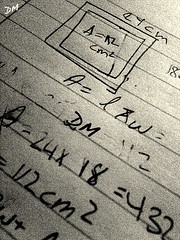 An independent business valuation intends to establish the fair market value of a business. Basically, there are three core methods to value a business based on income, assets or market comparison.
An independent business valuation intends to establish the fair market value of a business. Basically, there are three core methods to value a business based on income, assets or market comparison.
A professional business appraiser may use a blended valuation model, combining components of the three approaches as applicable to the particular circumstances of a business. The valuator will examine past and projected cash flows, business assets, along with other available financial and operational information within the context of the industry and economic conditions. A comprehensive valuation report will include a valuator’s opinion and integrate all applicable approaches in the valuation package.
Income-Based Approach
The income-based method considers that the main purpose for operating a business is to earn profits. It aims to arrive at the fair market price of a company by calculating anticipated future cash flows at the present value. The formula used is cash flow multiplied by a specified discount rate.
This approach is based on economic benefits that the business is expected to generate sometime in the future. Therefore, the element of risk is factored in the equation. Since income and risk must be estimated at current values, the process involves subjective judgments about capitalization and discount rates.
Capitalization is computed as: expected business income divided by the capitalization rate. A capitalization rate of 50% means that the business could be worth twice its annual earnings.
Discounting cash flows is calculated using several steps. First, forecast the business income over a period of years. Second, establish the discount rate which represents the risk of receiving the earnings at the expected time. Third, estimate the terminal business value, which is the worth of the business at the completion of the specified time frame. Lastly, the discounting formula yields its present business value.
Asset-Based Approach
The asset method calculates a company’s assets minus its liabilities, with the difference being its business value. It takes into account the replacement costs of assets that are depreciating in value. Although this approach aims for objectivity, its challenges lie in the choice of standards for calculating value and in estimating the actual worth of assets and liabilities. Intangible assets such as proprietary operational procedures are hard to quantify and are not reflected on the balance sheets.
Market-Based Approach
The market-based method uses current competition and conditions in the actual marketplace as indicators. It reviews recent business sale and purchase transactions. Taking into account the industry, nature of operations, growth prospects of the business, the valuator compares the going rates for similar businesses.
Using the same business valuation method does not guarantee the similar results. The variables at play in a given formula determine the differences. For example, varying assessments of risks involved will change the capitalization and discount rates. Estimated income projections will also differ. Ultimately, the fair market value of a business is the result of the negotiations between what a purchaser is willing to pay and what an owner is willing to accept for the sale of his business.
 By Adam Bannister, managing editor of BusinessesForSale.com. Adam also manages content for other titles in the Dynamis stable, including FranchiseSales.co.uk and BusinessWings.co.uk, as well as being an occasional contributor to the Huffington Post, Talk Business magazine and Start Your Business Magazine.
By Adam Bannister, managing editor of BusinessesForSale.com. Adam also manages content for other titles in the Dynamis stable, including FranchiseSales.co.uk and BusinessWings.co.uk, as well as being an occasional contributor to the Huffington Post, Talk Business magazine and Start Your Business Magazine.

Leave a Reply